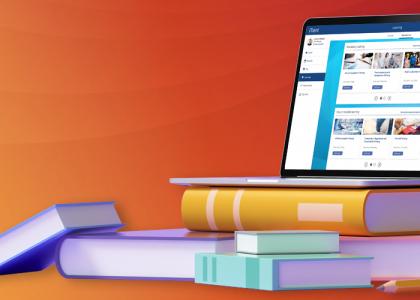16 January 2023
Why blended learning meets 21st century training needs

Employee training is high on many 2023 'to do' lists - but what works best?
Facilitator-led vs digital learning
Learning and development departments (L&D) have long been evolving their approaches and attitudes to learning in the workplace. While the pandemic dictated a shift in learning approach and mentality, it could be argued that the impacts of COVID merely accelerated a transition that had been a long time coming.
In the 1980s, Charles Jennings et al had already identified – through their 70:20:10 model – that only approximately 10% of learning came from formal interventions and planned learning solutions. Learners were looking to many different methodologies to learn new concepts and so the approach to L&D had to evolve too. Evolution in this case wasn’t about replacing the methods, it was about developing new ones to co-exist and provide a more rounded approach to learning.
Does this mean all learning should transition to digital?
Simply put, no! Decades on from the 1980s, face-to-face intervention remains high on the preference list for many learners and organisations, despite the vast range of alternative learning methods now on offer.
For many learners, ‘modern’ facilitator-led training sessions tick the ‘social learning’ box as they provide an opportunity for group interaction, engagement, discussion and networking. Long gone are the chalkboards, overhead projectors and teacher-led style of training delivery. Modern ‘classrooms’ encourage collaborative learning, with a facilitator rather than a teacher. One survey conducted by Towards Maturity found that collaborative learning was considered the most useful form of learning (91%). Jennings’ findings also revealed that 70% of learning occurs with or through others. Face-to-face training enables facilitators to read participants’ body language, adapt the content and approach to obtain better learning results and provide live feedback and troubleshooting when needed.
Accessibility is key
Yet while face-to-face courses remain in demand, flexibility and accessibility of learning content have become increasingly important to learners. Why? Because they want solutions when they need them (often at short notice), and not as dictated by a training schedule. Similarly for organisations such solutions can be costly in terms of both time and money.
The evolution of learning technologies came at a time when traditional face-to-face methods were unable to meet these flexibility and accessibility demands. Digital learning, such as formal eLearning, online delivery, ‘how-to’ videos and community forums, have fast become solutions for learners. Many of these methods and interactive tools enable learners to move at their own pace and revisit and review information when required, which can better support individual learning styles and preferences. This allows employers to deliver learning on-demand and instantly assess their learners through digital reports.
New Technology
eLearning has changed rapidly since its inception, especially with the rise of new technologies and learning methodologies. Designers and developers often have to consider the learning experience across mobile devices and accessible design. In recent years virtual reality and augmented reality have also been on the increase within the digital learning sector. Historical ‘click to reveal’ text options on the screen have been replaced with 3D interactions, videos, games and simulations.
However, digital learning also presents its challenges. Participant engagement can be difficult and human support may not be immediately available. Many organisations may not have the software, platforms or indeed the technical expertise to design and develop highly engaging digital learning solutions which may lead to costly outsourcing.
So, what is the solution?
L&D professionals and organisations have sought hard to find a one-size-fits-all solution for their learners’ needs. The demand for learning anywhere and anytime has meant that reliance on one single method is no longer sufficient. This is where blended learning approaches can be beneficial. Blended learning enables organisations to reach wider audiences at a fraction of the cost through digital solutions, but also offer opportunities for more traditional and other approaches such as face-to-face training, coaching, mentoring and social and collaborative learning.
A Towards Maturity study found that 88% of learners like to learn at their own pace, but only 26% of training programmes they attended were blended. Nowadays, many more organisations are heading down this route, mixing traditional approaches with learning management system-hosted content to provide a well-rounded offering to their employees.
MHR has taken the blended learning approach to our customers. We offer facilitated, remote or in-person training courses and bitesize learning through spotlight sessions, while simultaneously offering digital training subscriptions in the form of iTrent LearnNow and People First LearnNow.



